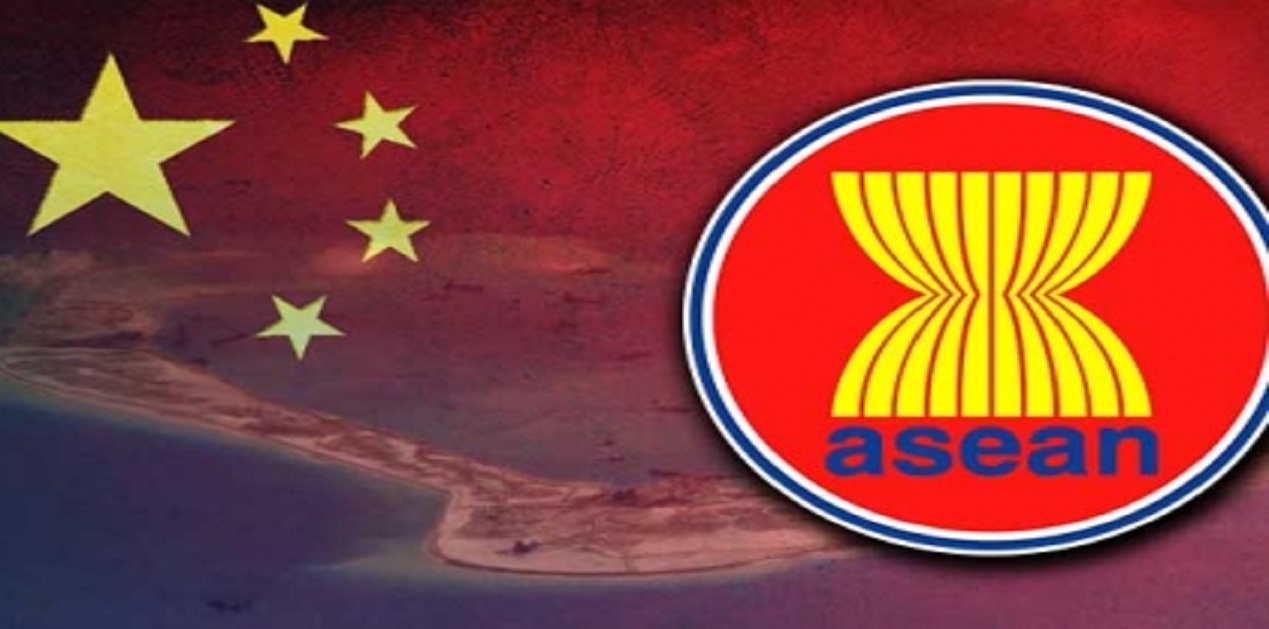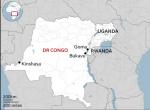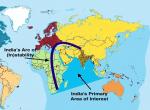Introduction
Recent developments in South China Sea have necessitated fast-tracking the finalisation of a legally binding Code of Conduct (COC) for all competing parties in the disputed waters. There are doubts, however, if such a document can be arrived at any time soon purely because of China’s rigid position. China and the countries of the 10 member ASEAN bloc have been negotiating a COC after reaching an initial Declaration on the Conduct (DOC) of Parties in the South China Sea in 2002. The urgency for finalising an agreement of a COC has been felt more urgently in Southeast Asia, especially after Chinese vessels up-scaling harassment of Filipino fishermen by Chinese Coast Guard and maritime militia ships in the disputed South China Sea. That expectation may remain a will-o-the-wisp, at least for now. [1]
In 2018, ASEAN and China released a Single Negotiating Draft Text (draft agreement). In July 2023, both sides announced that they had completed its second reading. A third reading is believed to have commenced in October 2023. While admitting that the issue of the South China Sea is highly complex and faces external interference as perceived by the Chinese foreign ministry, it still feels that ASEAN countries will work towards the eventual adoption of the COC.
Main Obstacles
China has often pointed at the so-called external interference, a thinly veiled reference to the US and allies, as the main discord between Beijing and the ASEAN. Beijing has accused the US of interfering with the affairs of the South China Sea and turning into a sea of conflict and sea of water. China has therefore submitted provisions of the COC negotiating text that are clearly designed to stem any “external interference”. One of China’s provisions says parties in the South China Sea “shall establish a notification mechanism on military activities and to notify each other of major military activities if deemed necessary”. The text further says that the “parties shall not hold joint military exercises with countries from outside the region, unless the parties concerned are notified beforehand and express no objection”.
This provision provided by China if adopted would block any joint military exercises, bilateral or multilateral, between ASEAN countries and the US, as well as Japan and other regional powers, unless Beijing agrees to them. It is here consensus is difficult to arrive at within the ASEAN bloc. For example, Vietnam disagreed with this provision and submitted its own. It asked for only a notification of any impending joint or combined military exercise to take place within the South China Sea. It said such notification should be made 60 days before the commencement of such a military exercise. Besides Vietnam, the Philippines and Singapore are also unlikely to accept the Chinese proposal.
Resource, the Key Issue
Exploration of natural resources in the South China Sea could be another stumbling block towards any progress on COC. According to the Global Times, the state-owned oil giant CNOOC has discovered its first deep-water, deep-reservoir oil find in the South China Sea. According to the company, the Kaipingnan oilfield, 300 kilometres southwest of the waters of Shenzhen in South China, has a proven reserve of 102 million tons of oil equivalent. It is the first oil reserve with a water depth of over 300 meters and a well depth of over 3,000 meters. China claims it has found these reserves by its own efforts. The maximum depth where the oilfield lies is 532 meters and the maximum well depth reached 4,831 meters. [2]
The Kaipingnan oilfield demonstrated the vast potential of deep-water exploration in the South China Sea. This find further consolidates the foundation of China's offshore oil and gas reserve, which is significant toward ensuring the country's energy security. In earlier years, CNOOC made significant discoveries at the Bozhong 26-6 deep-reservoir oilfield in China's Bohai Sea and the Baodao 21-1 gas field in western South China Sea. By continuing to put more efforts in oil and gas exploration in the South China Sea, China hopes to ramp up energy supply capacity.
In order to strengthen its claim and control, China proposed that oil and gas exploration and development in disputed waters shall be carried out through coordination and cooperation among the littoral states to the South China Sea, and shall not be conducted in cooperation with companies from countries outside the region.
Malaysia disagreed. It submitted a counter-proposal for including a provision saying that nothing in the COC shall affect the rights or obligations of parties under international law, including the rights or ability to conduct activities with foreign countries or private entities of their choosing. These two are contentious issues and look difficult that an agreement or common viewpoint can be arrived.
China seemed to have inserted this provision on oil exploration in an attempt to coerce other countries into signing joint development agreements with Chinese companies. The claimant nations view this gambit as a violation of their sovereign rights under the United Nations Convention on the Law of the Sea (UNCLOS). If China agrees to drop this provision, it would fundamentally undermine its own jurisdictional claims. This transpires that a decision on the COC shall remain elusive.
The blame game continues especially after the recent on-going spat between the Philippines and China. [3] China has disapproved Manila’s efforts to resupply its military outpost on the Second Thomas Shoal and called it a “dishonest approach” and a violation of international law. The Philippines however, is unlikely to accede to any of China’s demands without coordination with the US in support of its Indo-Pacific strategy. [4]
After Ferdinand Marcos Jr. became President of the Philippines in 2023, he has adopted a tough stance defending Philippines’ sovereignty and opposed Chinese position that threatens to undermine the existing position. He indicated on several occasions that his country could seek to form bilateral codes of conduct with neighbouring countries to prevent incidents at sea. He visited Hanoi where he and Vietnamese leaders agreed in principle on maritime cooperation. Both countries laid emphasis on the importance of maintaining peace, stability, maritime security, safety, and freedom of navigation in and over-flight above the East Sea. [5]
There is a caveat, however. Despite its understanding with Marcos Jr., Hanoi would not want to be seen as taking sides in any dispute. Yet, Beijing is likely to see the understanding between Manila and Hanoi as an attempt by Manila “to forge its own clique in the South China Sea. With stark differences remaining on the most critical issues, it is hard to see how the China-ASEAN COC negotiations are going on the right track. In July 2023, ASEAN and China committed to concluding a COC within three years. That is unlikely to happen.
Unless China stops intruding into the EEZs of Vietnam, Malaysia, the Philippines and Indonesia, any progress on the COC may remain eluded. To stem the temper running high, the US Navy conducted Freedom of Navigation Operations in the Paracel and Spratly Islands.
When Indonesia took over the ASEAN chairmanship in January 2023, it sought to deescalate tensions by pledging to speed up talks between the 10-nation bloc and China on the COC for the South China Sea. Though Jakarta claimed the completion of the second reading of the negotiation text (the first reading was completed in July 2019), and set guidelines to accelerate talks on future drafts, these appeared to be tall claims as the second reading was never published.
Guidelines
What are supposed to be the guidelines? The guidelines are essentially an agreement to increase the frequency of meetings of the ASEAN-China Joint Working Group, which is tasked with drawing up the COC, to four or five or more a year. Though it also sets a deadline of three years to complete the talks, there is no exact timetable set for the process. [6] Though some basic principles have been agreed by the 11 parties, China is unlikely to agree to the premise that the Code should be in accordance with international law, including the 1982 UNCLOS.
China’s Rigid Position
China has issue with the geographical scope of the agreement, particularly its nine-dash line, which it uses to demarcate its expansive territorial and jurisdictional claims in the South China Sea. None of the claimants in the 10-member bloc accept the legal basis of the nine-dash line because it violates their maritime rights enshrined in the UNCLOS. Their position is backed by the July 2016 ruling by the UN-backed arbitral tribunal, which ruled that the U-shaped line drawn by China is incompatible with UNCLOS. China has repeatedly repudiated the tribunal’s ruling and refused to abide by the judgment. While China is unlikely to drop its insistence to include the nine-dash line in the discussions on the geographical scope of the agreement, the claimant nations are also unlikely to accept China’s position. So, the deadlock shall continue.
The other issue relates to the inclusion of a list of prohibited activities, such as land reclamation, the militarisation of occupies atolls and harassing ships belonging to other claimants. Vietnam is keen on its inclusion but China is opposed because it is through actions such as these that it tries to enforce its claims. Storey from Yusof Ishak Institute, Singapore, observes that “if the CoC is to add value to the non-binding 2002 ASEAN-China Declaration on the Conduct of Parties (DoC) in the South China Sea, it needs to include a list of tension-generating activities the claimants should desist from”.
Legal Issue
There is yet another issue that could be more problematic as it relates to the legal status of the Code. To make it legally binding, the Code should include mechanisms to referee disputes between the claimants and impose penalty who violate it. Some ASEAN members may deem this approach too confrontational. Storey observes: “if the CoC has no legal force, a violator can act with impunity; if the Code is non-binding and voluntary, it will not be a step up from the DoC, which is the whole point of the CoC”.
China’s insistence that the littoral states cease cooperation with foreign energy companies in “disputed” waters is another stumbling block. For example, India’s overseas wing of the ONGC’s oil exploration activities in Vietnam’s EEZ on Vietnam’s invitation must cease operations on Chinese demand. Vietnam is unlikely to agree to this. There seems to be a hidden Chinese agenda to its proposal; by coercing other claimants it could cajole those countries to sign joint development agreements with Chinese companies. The claimant nations in Southeast Asia view this gambit as an egregious violation of their sovereign rights under UNCLOS. If China drops this provision, it would fundamentally undermine its own jurisdictional claims. Thus, it transpires that an agreement on the COC is unlikely to fructify anytime soon as the issues are too complex and negotiations could drag on for several years.
References
[1] Jojo Riñoza, “China, ASEAN Unlikely to Achieve Code of Conduct in 2024: Experts”, 7 February 2024, https://www.benarnews.org/english/news/philippine/code-conduct-02072024132109.html
[2] “China discovers oil field of proven reserve of 102 million tons in South China Sea: CNOOC”, The Global Times, 8 March 2024, https://www.globaltimes.cn/page/202403/1308471.shtml
[3] For a background of this ugly developments, see Rajaram Panda, “China-Philippines Spat Over South China Sea: Implications for the Region”, Journal of Indian Ocean Studies, vol. 31, no. 3, September-December 2023, pp. 155-165.
[4] For the Chinese perspective on Philippines’ position, see Ding Duo and Zhang Hui, “Ren'ai Reef: DOC's value and the Philippines' delusion”, The China Daily, 4 February 2024, https://www.chinadaily.com.cn/a/202402/04/WS65bf4d30a3104efcbdae996c.html
[5] “Philippine President concludes State visit to Vietnam”, 31 January 2024 https://en.vietnamplus.vn/philippine-president-concludes-state-visit-to-vietnam/277038.vnp
[6] Ian Storey, “The Code of Conduct for the South China Sea: Movement in lieu of Progress”, 20 JULY 2023, https://fulcrum.sg/the-code-of-conduct-for-the-south-china-sea-movement-in-lieu-of-progress/
(The paper is the author’s individual scholastic articulation. The author certifies that the article/paper is original in content, unpublished and it has not been submitted for publication/web upload elsewhere, and that the facts and figures quoted are duly referenced, as needed, and are believed to be correct). (The paper does not necessarily represent the organisational stance... More >>
Image Source: http://www.maritimeissues.com/temp/-uploaded-2017_COC_cr_420x270.jpg











Post new comment